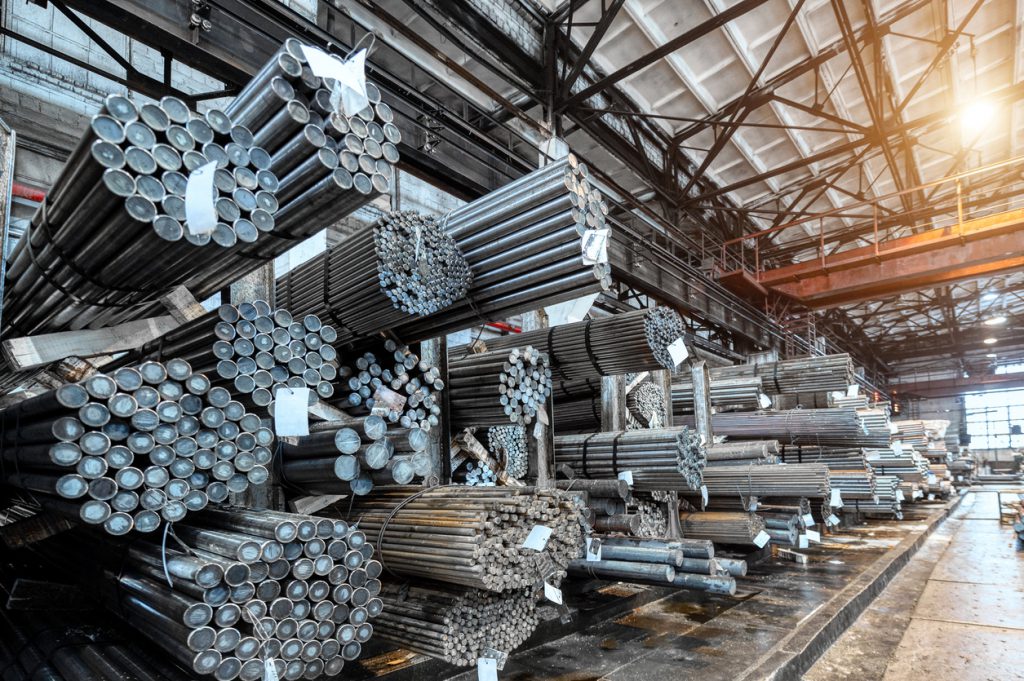
Cryogenic Hardening of Steel Tools Improves Longevity
When people think of cryogenics, they tend to think of cryogenic storage or medical procedures, but it is much more than that. Cryogenics is the scientific study of materials and their characteristics observed at very low temperatures and has a wide range of applications, including medicine, electronics, and material sciences. One application that many may not be aware of is the use of cryogenics in the manufacturing of steel tooling.
History of Cryogenics
The history of cryogenics began with cold treatments. There are early stories of Swiss watchmakers burying parts in the snow and automaker Pierce Arrow subjecting engine blocks to the cold-treatment aging method in snowy Buffalo, NY. Using very cold temperatures – cryogenics – has been traced back to a company in 1930 Germany where the process was used on airplane components.
Using cryogenics to improve the characteristics of metal tooling in the United States was realized during WWII when scientists discovered that steel cutting tools immersed in liquid nitrogen sometimes experienced longer service life. It would be several decades before the process was refined to produce repeatable results.
How Cryogenic Hardening Works
Steel is an alloy made from a combination of iron and other elements. The type of steel depends on what other elements are present with the iron. Steel must be hardened to get the strength characteristics we associate with it. Cryogenics is a form of metal hardening used to enhance the properties of tool and die steels and provide strength and wear resistance while relieving stresses that lead to wear fatigue.
Cryogenic hardening is often performed after heat treatment. Heat treating converts part of the metal structure to martensite, but a portion remains as austenite. Cryogenic hardening can convert the remaining austenite to martensite. Reducing the retained austenite content enhances the dimensional stability and increases the life of the tooling. It should be noted that this process, although called hardening, doesn’t increase the hardness on the Rockwell scale by much, which could make the metal brittle. Instead, the tempering creates a denser, more stable material.
Cryogenic hardening is done using frigid temperatures – below -310° F (-190° C). This is done slowly to prevent thermal stress, and the metal is held at that low temperature for 30 hours or more. Then it is heat tempered to around 149° F (300° C) to reduce brittleness. The effect of the cryogenic treatment goes beyond the surface. It realigns the molecular structure of the metal, so additional processes, such as machining or grinding, do not impact the hardening.
Benefits of Cryogenic Tool Hardening
Cryogenic treatment of tooling can reduce costs. It improves the tools’ properties, such as wear resistance, coefficient of friction, dimensional stability, and stress relief. Cryogenic treatment has been shown to improve tool life by 92 percent. Less downtime and fewer tool replacements translate to long-term cost savings and improved efficiency.
During metal processing, weak areas can develop within the molecular structure. These can lead to an increased likelihood of failure. Cryogenic treatments help to create a more uniform grain structure throughout the part.
To recap: the benefits of cryogenic tool hardening include the following:
• Measurable improvement in wear resistance
• Improved durability because of improved and consistent grain structure in the metal
• Reduction in residual stress that can occur when the metal cools down from the liquid (molten) state to a solid, reducing fatigue failures
• Reduced coefficient of friction, resulting in less friction between parts
Experience Long Tooling Life and Cost Savings
In a competitive manufacturing environment, being able to count on your high-precision tooling and components is essential. Backed by 60 years of experience, we deliver complex, precision/OEM tooling for ammunition, firearms, defense, automotive, and other precision applications. As an ISO 9001:2015 certified company, quality is the foundation for all we do. With in-house heat treating and cryogenic treatment plus design engineering and advanced manufacturing capabilities, we provide our customers with longer-lasting high-precision tooling while saving them money.
